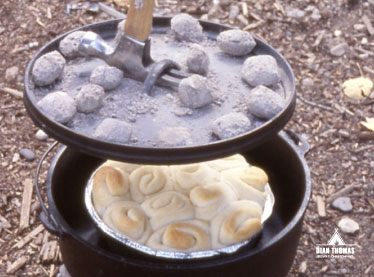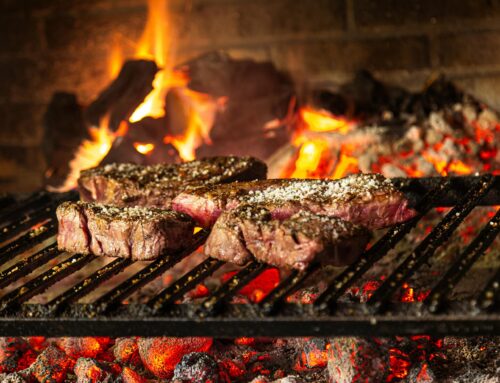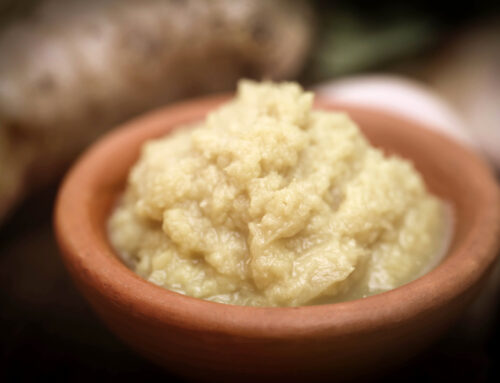This weekend I had guests in from Texas. The first thing they asked me was, “How can we cook in the Dutch oven you sent us?” I used the delicious Pistol Rock Chicken recipe that I shared with you last week to start out. Their next question was, “Can I cook fish and make biscuits?”
I knew that is was time to go over the basics, now that their interest was really us. So Monday I cooked trout that a friend caught in a stream about four miles from my home — and then came the delicious golden brown biscuits.
Cooking in a Dutch oven is much like painting by number. Below I will go through the basics of Dutch oven cooking, and if you follow the basic rules you will turn out the most incredible dish time after time after time.
Virtually any method of cooking you encounter on a daily basis can be adapted for Dutch oven use — baking, braising, boiling, frying, stewing and roasting.
Temperature Control
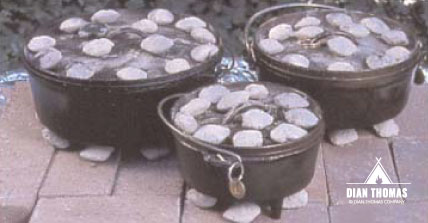
Most baking recipes require a temperature setting of 325ºF. An easy method to get a temperature of 325ºFahrenheit within your Dutch oven is to subtract or add the number 3 to the size of your Dutch oven to determine the number of charcoal briquettes to use underneath and on top. Find the size of the Dutch oven you use (see chart below) to know the correct number of briquettes.
Dutch Oven 325° Temperature — Briquette Quantities
Size of Oven Top Bottom
8-inch 11 5
10-inch 13 7
12-inch 15 9
14-inch 17 11
16-inch 19 13
The following example uses the formula for a 12-inch Dutch oven.
* Subtract 3 from 12, which equals 9 — the number of briquettes to place beneath the oven.
* Take the number 12 and add 3, which equals 15 — the number of briquettes to place on the lid of the oven.
With this formula, 9 briquettes go underneath and 15 briquettes are placed on the top of the lid of a 12-inch Dutch oven to cook at 325ºF. One-third of the heat will be underneath the Dutch oven, and two-thirds of the heat will be on top. Heat rises, so you do not need as many coals on the bottom of the oven.
Arrange briquettes so they are evenly spaced under the Dutch oven and on its lid. Also, you always need to rotate your Dutch oven a quarter turn every 15 minutes to avoid hot spots. Replace briquettes with new coals as they burn out.
Baking in a Dutch Oven
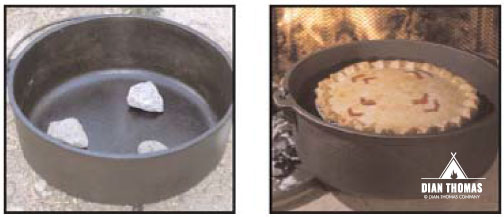
Most people would never dream of baking outdoors, but the most flavorful treats can be baked in a Dutch oven. Cake, pie, and biscuits cooked in your kitchen take about the same time in a Dutch oven. Baking can be done directly in the Dutch oven bottom, or by placing a pan in the oven elevated on rocks, canning jar rings, a Dutch oven rack, a round cookie cooling rack or small wads of foil. When elevating your food, temperature control is determined by charcoal briquette placement. In a Dutch oven, you create an oven like the one at home, which allows hot air to circulate around the pan. This is the easiest way to bake in a Dutch oven.
I suggest taking a prepared pie with you and cooking it at your camping site. In a 12-inch Dutch oven, place 12 hot coals on the bottom and 17 on top of the lid to create a 375ºFahrenheit oven, and bake 30 to 40 minutes.
Roasting Foods in a Dutch Oven
Most roasting recipes require a temperature of 375ºF. or higher. To achieve a high-temperature oven, you need to use additional coals on the lid and underneath. Preheat the Dutch oven for 10 or more minutes before filling it. For example, to reach 375ºF. in a 12-inch Dutch oven, use 11 coals under the Dutch oven and 17 hot coals on the lid.
Frying Foods in a Dutch Oven
To sauté food in a Dutch oven, place charcoal briquettes under the oven in a checkerboard pattern, using the same number of briquettes as the size of the Dutch oven. For example, a 12-inch Dutch oven requires 12 briquettes underneath.
To fry foods in deep oil in a Dutch oven, place charcoal briquettes under the Dutch oven using 3 or 4 more briquettes than the size of the Dutch oven. For example, a 12-inch Dutch oven would require 15 to 16 briquettes underneath.
Simmering Foods in a Dutch Oven
For simmering foods, start with a 325ºF oven and let the coals cool as your food cooks. Do not replace briquettes as you would to continue baking at 325ºF. Hot coals are enough to simmer foods for 1 to 1 1/2 hours, especially when you tap the ashes off which adds more oxygen to the coals.
Stacking Multiple Dutch Ovens
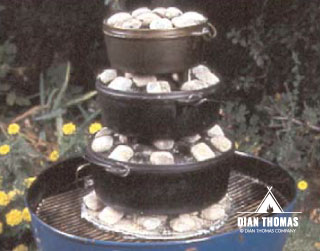
When cooking several different dishes at the same time, stack the pots to save space and briquettes. Stacking works best if you put the food to be baked at the bottom of the stack and add
Dutch ovens with shorter cooking times on top. Food to be sautéed is in the smallest oven at the top of the stack. Always stack the largest Dutch oven at the bottom and decrease in size as you stack. Add three briquettes to the number of inches of each pot and put that many briquettes on each lid.



